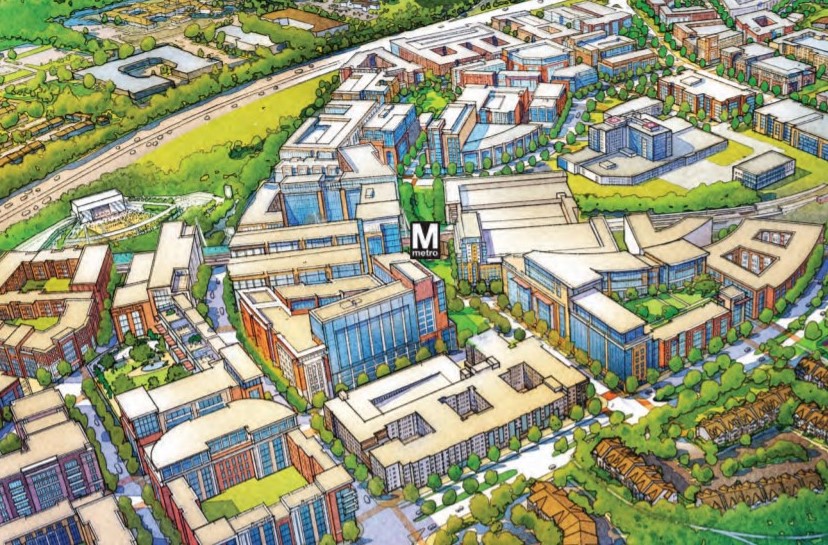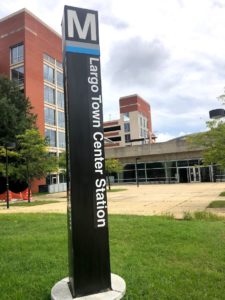Memorandum to the Prince George’s County Council
Category: Transit-Oriented Development
Comments re: NVTAuthority Annual Organizational Meeting
I’ll begin with expressing deep appreciation for your public service and the service of all staff. I join others in praising your Gateway dashboard. We also appreciate the support some jurisdictions have given to dedicated bike/ped and transit investments.
RISE Prince George’s Holiday Happy Hour
December 13, 2021, 6-8 pm

Let’s get together (outdoors) to celebrate and look forward to the upcoming election year!
Join us on December 13 from 6:00-8:00 pm to celebrate our year of work together and look to next year — which is an election year! We’ll hear from the new Hyattsville Mayor Kevin “Scooter” Ward and other presenters who can speak to our past, present, and future of creating dynamic gathering spaces (Downtowns), more affordable housing, and innovative transportation for everyone who lives, works, and plays in Prince George’s County.
WHEN: Monday, December 13, 6:00-8:00pm
WHERE: Town Center Market – outdoor patio (with some heaters)
4705 Queensbury Road | Riverdale, MD 20737
Transit Directions: The market is located directly adjacent to the Riverdale MARC Station but is also just a short last-mile connection (walk, bike, or bus) from the Prince George’s Plaza Metro Station
First 30 people get a free drink!

Celebrate a year promoting our agenda of a shared, sustainable prosperity by creating safe, walkable, inclusive and transit-oriented communities.
Learn from community leaders, including Hyattsville Mayor Kevin “Scooter” Ward
Launch the RISE Prince George’s election platform to educate candidates and the public about how to build a better Prince George’s. Learn about how you can be part of winning support from our future elected officials to build a more sustainable, prosperous and inclusive County.
Learn more about RISE Prince George’s here.
Photo: Mayor Kevin “Scooter” Ward, City of Hyattsville, MD
COVID-19 precautions: we encourage everyone to be fully vaccinated. This event is held outside, so bundle up! RISE Prince George’s does not endorse or work on behalf of candidates, or express any view for or against any candidate.

A 30-Year Vision for Chevy Chase DC
CSG worked with Ward3Vision to create an Urban Design Concept for Chevy Chase and present to the community through an event hosted by Historic Chevy Chase.
Support the Countywide Map Amendment (aka “CMA”), while preventing displacement
The CMA is critical to building quality, walk- and bike-friendly communities and vibrant, transit-oriented downtowns. That’s why CSG is urging the Council to implement this once-in-a-generation zoning rewrite. We’re close to the end of a process that began in 2014 – putting in place modern zoning regulations to replace 50 year old rules!
Send a message to the Council today!
However, we’re concerned that, in some cases, aging apartments in designated transit centers are proposed for significant upzoning without sufficient protection for residents against displacement. Therefore, while supporting the CMA, we’re asking the County to adopt one of the fixes we’ve proposed to address this problem. We’ve included our suggestions in the sample letter we’re providing to you. You can also read more about our solutions in CSG’s testimony here.
Take Action: How should we live in 2050?
Do you want to be able to easily walk, bike, or hop on a bus? Wouldn’t it be great if it were easy to find a great place to live that doesn’t stretch your budget? How can we make sure our neighborhoods are resilient in the face of climate change?
For nearly two years, Montgomery County has been working on a new general plan called Thrive Montgomery 2050, a blueprint for how and where the county will grow over the next 30+ years. Now, it’s up to the County Council whether or not to maintain and strengthen the Planning Board’s bold vision.
Send an email to your councilmembers to support Thrive 2050!
We believe the Planning Board has done a great job embracing smart growth as the most sustainable and equitable way for Montgomery County to grow and provide opportunities for everyone. On its own, Thrive doesn’t change any laws, but it will set the policy agenda for the County Council, influence the Planning Department’s work program, and impact all future master plans. It’s absolutely critical for the future!
Use this form to tell your councilmembers that you support a vision for Montgomery County that is more affordable, equitable, sustainable, inclusive, and prosperous. You can read the Planning Board’s draft of Thrive and learn more about the plan here, and learn about CSG’s Thrive 2050 campaign here.
CSG comments on Plan Langston (Lee) Highway study
Dear Ms. Alfonso-Ahmed,
The Coalition for Smarter Growth appreciates the opportunity to provide comments on the Land Use Scenario Analysis (LUSA) shared with the community over the spring as part of the Plan Lee Highway visioning process.
CSG advocates for walkable, bikeable, inclusive, and transit-oriented communities as the most sustainable and equitable way for the Washington, DC region to grow and provide opportunities for all. The Lee Highway (future Langston Boulevard) corridor provides a great opportunity to plan for a future that accommodates new growth and development in a way that is inclusive, sustainable, and meets the community’s current and future transportation, housing, and livability needs.
CSG offers the following comments on the LUSA:
- The additional heights and greater potential for consolidation as part of the LUSA’s Scenario B will help facilitate more affordable multifamily housing in the corridor and help to produce more housing overall.
- Providing bonus heights to reach the maximum heights shown in Scenario B could be achieved in exchange for committed affordable units within those buildings. Similar zoning incentives are utilized elsewhere in the County. The Columbia Pike Neighborhoods Form Based Code allows for a bonus of either two or six stories for provision of affordable housing, and other RA zoning districts within the County are allowed up to 60 feet of additional height for projects with 100% committed affordable units.
- The edges of the commercial areas along the corridor are ideal places for Missing Middle Housing as a transition to the lower-density residential areas. As presented in the LUSA, however, it is unclear how the County plans to regulate development within the “two-family to low-scale multifamily residential” and areas of up to 4 stories in height. This lack of clarity has caused concern among some neighborhood residents. Since the Missing Middle Study is expected to include an analysis of this type of housing, it would be helpful for the county to conduct additional community outreach and discussions regarding the specifics of these transition areas once that study is further along.
To assuage concerns, the Preliminary Concept Plan should make clear that transition zones will be established to step down heights to nearby neighborhoods and include goals that these transition zones are expected to achieve and the potential forms that the development could take. It should further make clear that any action to move toward a possible redevelopment in these areas would be voluntary and that no forced acquisition or eminent domain will be a part of that process.
- The East Falls Church (EFC) area plan should be updated with the higher allowable heights and transition zones consistent with the rest of the corridor. The current EFC area plan does not allow for an adequate amount of development for a key Metro station that will also serve the future Route 7 Bus Rapid Transit. These updates should include not only the direct Metro station area but also the surrounding commercial and residential blocks to create a walkable, transit-oriented neighborhood befitting a major metro station area.
- The Cherrydale plan should also be updated to be consistent with the allowable heights and transition zones in the rest of the corridor. This means that additional height beyond what is in the original Cherrydale plan should be proposed.
Thank you for your consideration of our comments. We appreciate the opportunity to help develop a plan that helps guide the new Langston Boulevard corridor into a vibrant, inclusive, and transit-oriented corridor.
Thank you,
Sonya Breehey

